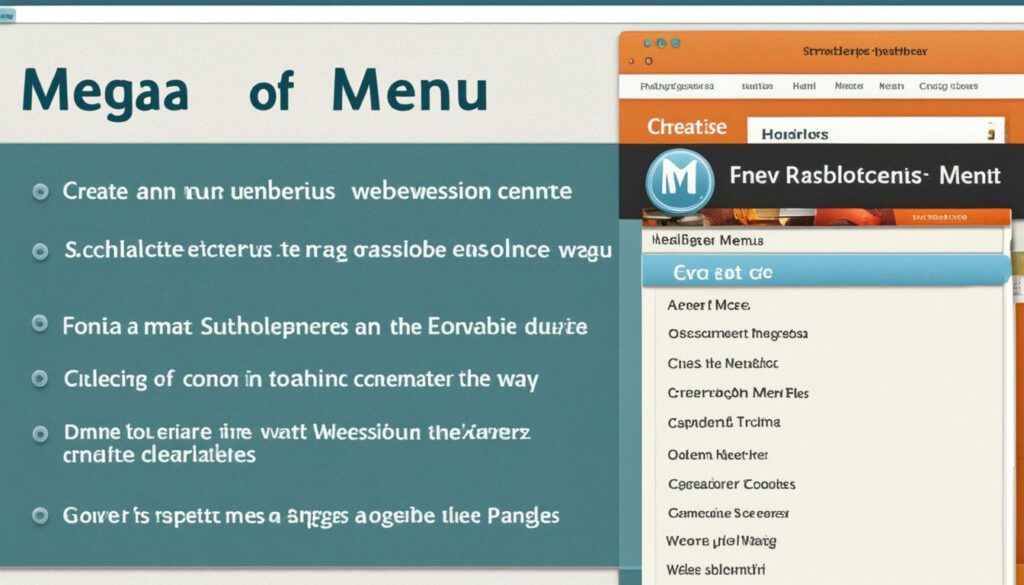Learning Center
Schema Markup Implementation: Boost Your SEO!

Incorporating Schema markup into your website is crucial for improving your site’s visibility on search engines like Google. Leveraging the itemprop attribute in your schema markup can immensely boost your site’s visibility on search engine results pages.
By adding article markup and schema markups to your web pages, you can enhance their visibility in Google search results and improve click-through rates for relevant keywords. Schema markup, also known as schema.org markup, provides a standardized vocabulary for search engines like Google to understand and interpret the content on your website.
By using schema.org markup, you can provide structured data that includes itemprop attributes, which help search engines categorize and index your website more effectively. This improves your website’s visibility and relevance in search results, as well as enhances the user experience. So, make sure to incorporate schema markup with relevant keywords to optimize your website for better search engine rankings.

When you implement schema markup with itemprop, search engines like Google can better comprehend the context and meaning of your website’s content. This helps improve your page’s visibility and relevance for specific keywords. This leads to the display of rich snippets in search listings, such as star ratings and additional links below the main result.
With article markup and schema markups, you can enhance your website’s visibility on Google. By implementing sitelink markup, you can also improve the appearance of your search listings by adding extra links. With article markup and schema markups, you can enhance your website’s visibility on Google. By implementing sitelink markup, you can also improve the appearance of your search listings by adding extra links. With article markup and schema markups, you can enhance your website’s visibility on Google. By implementing sitelink markup, you can also improve the appearance of your search listings by adding extra links.
With article markup and schema markups, you can enhance your website’s visibility on Google. By implementing sitelink markup, you can also improve the appearance of your search listings by adding extra links. Websites that have properly implemented schema markup often rank higher on Google search results and see increased user engagement. For example, when users look for a specific page, having schema markup can make your website stand out and attract more attention.
Understanding the importance of schema markup for optimizing your website’s performance in Google search is essential. Its role in SEO and how to implement specific markups like logo, review, and sitelink markups can make your page look more appealing to users. For example, implementing these markups can improve your website’s visibility in Google search results. So let’s get started!
Types of Schema Markup for SEO Enhancement
Exploring Different Schema Formats
There are several formats available for implementing schema markup on a website page. For example, one way to implement schema markup is by using JSON-LD. This format is recommended by Google for improving search engine visibility. By adding structured data to your website, you can provide more context and information to search engines like Google, helping them understand and display your content more accurately in Google search results.
The three most commonly used schema encoding types for article schema are JSON-LD, Microdata, and RDFa. Schema markups can be implemented using these formats with the help of tools like Schema App. Each page format has its own advantages and considerations in terms of compatibility and ease of implementation on a site. For example, you can use different formats for different pages on your site.

JSON-LD is the recommended format to use for schema markup on a site or page. Its simplicity and flexibility make it an ideal choice, resulting in better optimization and organization of data. Schema App allows web developers to embed structured data within script tags on their site or page using a JavaScript-like syntax, which can improve the visibility of their site in Google search results. JSON-LD provides a clean separation between the HTML content on a site and the schema markup on a page, making it easier to read and maintain. This is especially important for optimizing item visibility in Google search results.
Microdata, on the other hand, is an HTML-based syntax for embedding schema markup directly into the HTML code. This helps improve the visibility of your page on Google search results by providing structured data about your items. This helps improve the vsibility of your page on Google search results by providing structured data about your items. This helps improve the visibility of your page on Google search results by providing structured data about your items.

This helps improve the visibility of your page on Google search results by providing structured data about your items. It uses specific attributes within HTML tags to define structured data elements for Google. With Schema App, you can easily mark up your page and item with schema.org structured data. While Microdata is relatively easy to implement, it can sometimes clutter the HTML code and make it harder to read for Google.
This can affect the visibility of your page in search results. However, it is important to use Microdata correctly to ensure that Google can understand the structured data on your page and display relevant information about your item.
RDFa (Resource Description Framework in Attributes) is another format that allows embedding structured data within HTML tags on a Google page. This format is useful for organizing and displaying information about a specific item. Additionally, RDFa can also be used to optimize voice search results. It uses specific attributes similar to Microdata but follows the RDF standard for defining relationships between different entities.

Google uses these attributes to determine the relevance of a page in search results, including voice search results. Google uses these attributes to determine the relevance of a page in search results, including voice search results. Google uses these attributes to determine the relevance of a page in search results, including voice search results.
Google uses these attributes to determine the relevance of a page in search results, including voice search results. RDFa can be more complex to implement on a Google page compared to JSON-LD or Microdata but offers greater flexibility in expressing relationships between different entities in search results. Additionally, with the rise of voice search, implementing RDFa can help improve the visibility and relevance of your website in voice search results.
When choosing the right format for schema markup implementation, it’s important to consider factors such as website requirements, ease of implementation, and compatibility with search engines like Google.
Schema markup can help improve your website’s visibility in search engine results pages (SERPs) and increase the chances of your page appearing as a featured result. Additionally, optimizing your schema markup for voice search can further enhance your website’s performance in voice search results. JSON-LD is often preferred due to its simplicity and widespread support by major search engines like Google. It is widely used to optimize web pages for voice search. It is widely used to optimize web pages for voice search. It is widely used to optimize web pages for voice search. It is widely used to optimize web pages for voice search.
Effective Product Markup Strategies
Product schema markup plays a crucial role in enhancing SEO for e-commerce websites by improving visibility on Google search pages. Additionally, it helps optimize websites for voice search, which is becoming increasingly popular. By providing detailed information about products through structured data, you can improve visibility in Google search engine results pages (SERPs) and attract potential customers using voice search. Here are some effective strategies for implementing product markup:
-
Include attributes such as price, availability, brand name, SKU (stock keeping unit), and product description to optimize your Google page for voice search. This helps Google and other search engines understand the key details of your products on your webpage, which can improve your page’s visibility and ranking in search results. Additionally, optimizing your content for voice search can help you reach a larger audience and enhance the user experience.
-
Optimize product images for Google by adding appropriate image property tags, such as image URL, caption, and alt text. Ensure that these tags are included on your web page to improve your page’s visibility and ranking on Google search results. This allows search engines to better index and display your product images in image search results on the page.
-
Implement aggregate rating markup on your page to showcase the overall product ratings based on customer reviews. This can significantly influence potential customers’ purchasing decisions.
-
Utilize the offers schema on your page to highlight special promotions or discounts for your products. This can help attract more attention from users searching for deals or discounts on the page.
By implementing these product markup strategies, you can enhance the visibility and appeal of your e-commerce website in search engine results page.
Local Business Markup for SEO
For businesses with physical locations, implementing local business schema markup on their page is essential for improving local SEO performance. Local business schema is a crucial element for search engines to gather essential location-specific information about your business.
This information helps search engines understand and categorize your business better, making it easier for them to display your business in relevant search results. Implementing local business schema on your website’s page is highly recommended to improve your online visibility and attract more local customers. Here are some key elements to include in local business markup on your page.
-
Include the name of your business, address, phone number, opening hours, and page. This helps search engines accurately identify and display this information on the page in local search results.
-
Add geo-coordinates (latitude and longitude) to your business location page for precise mapping and directions.
-
Implement review markup on your page to display ratings and reviews from customers. Positive reviews on a business’s page can greatly influence a user’s decision-making process when selecting a local business.
-
Consider including additional attributes on your page such as payment methods accepted, service areas covered, or any other relevant details that would benefit potential customers.
By incorporating local business schema markup into your website’s code, you increase the chances of appearing prominently in local search results when users are looking for businesses like yours within their vicinity. This can greatly improve your page’s visibility and attract more potential customers. This can greatly improve your page’s visibility and attract more potential customers. This can greatly improve your page’s visibility and attract more potential customers. This can greatly improve your page’s visibility and attract more potential customers.
Step-by-Step Implementation Guide
Adding Schema Markup to Your Website
To enhance your website’s SEO, implementing schema markup on each page is crucial. Here’s a step-by-step guide on how to effectively optimize your web page.
Identify relevant schema types for your website content. Schema.org provides a comprehensive list of schemas that you can choose from based on the nature of your website’s page. Whether it’s an article, event, product, or recipe page, selecting the appropriate schema type is essential.
Next, you can add schema markup directly to the HTML code of your web pages or utilize a plugin if you’re using a content management system (CMS) like WordPress. If you prefer manual implementation, make sure to follow the schema guidelines and use appropriate properties and values for each page element.
Once you’ve added the schema markup to your page, it’s essential to test its validity and accuracy. Google’s Structured Data Testing Tool allows you to check if the markup on your web page has been implemented correctly. This tool will highlight any errors or warnings on the page that need attention.
Remember that schema markup isn’t a one-time task; it requires regular updates and maintenance to ensure that the page is properly optimized. As your website evolves and new content is added, make sure that the schema markup on each page remains up-to-date and accurately reflects the current information.
Utilizing Google’s Structured Data Markup Helper
Google offers a helpful tool called Markup Helper that simplifies the process of creating structured data markup on a webpage.
The Markup Helper tool supports various data types such as articles, events, products, and more. With this tool, you can easily add structured data to your web page. With this tool, you can easily add structured data to your web page. With this tool, you can easily add structured data to your web page. With this tool, you can easily add structured data to your web page. To get started, input either the URL of your webpage or paste in the HTML code directly into the tool.
Selecting the desired data type will allow Google to understand what kind of information you’re trying to mark up on your webpage.
Once you’ve provided this information, navigate through your webpage while highlighting relevant elements such as headlines, authors’ names, dates published, etc. The tool will generate structured data markup based on these selections.
Finally, the Markup Helper tool provides you with the generated HTML code for your website page, which you can easily implement. This eliminates the need for manual coding on each page and ensures accurate implementation of schema markup.
Marking Up Web Pages with Schema
Marking up web pages with schema is a powerful way to provide context and meaning to your content:
By including relevant properties such as headlines, authors’ names, dates published, and more on your page, you can help search engines understand the content better. For example, implementing article schema on news articles or blog posts allows search engines to display additional information in search results like publication date, author name, and page.
If your website has a hierarchical page structure, consider utilizing breadcrumb schema. This type of markup helps users navigate through your website by displaying a trail of links that represent the page’s position within the site’s hierarchy.
Implementing schema markup on a web page not only benefits search engines but also improves user experience. By providing additional information about your content directly in search results, users can make more informed decisions about which pages to visit.
Writing Effective Schema for SEO Content
Best Practices for Choosing Data Types
Selecting the right data types is crucial for optimizing your website’s SEO. When it comes to improving your page’s visibility and search engine rankings, choosing the appropriate data types can make a significant difference. When it comes to improving your page’s visibility and search engine rankings, choosing the appropriate data types can make a significant difference.
When it comes to improving your page’s visibility and search engine rankings, choosing the appropriate data types can make a significant difference. When it comes to improving your page’s visibility and search engine rankings, choosing the appropriate data types can make a significant difference. To ensure accurate representation of your content on the page, choose data types that align with the information you want to convey.
 Consider user intent and relevance when making these choices. It’s important to avoid using irrelevant or misleading data types solely for page manipulation purposes. Instead, focus on providing valuable and meaningful information to both search engines and users.
Consider user intent and relevance when making these choices. It’s important to avoid using irrelevant or misleading data types solely for page manipulation purposes. Instead, focus on providing valuable and meaningful information to both search engines and users.
To ensure proper implementation, it is essential to follow the guidelines set by schema.org. This ensures consistency across different platforms and search engines. Regularly reviewing and updating your chosen data types is also necessary, especially when making changes to your website’s content or structure. By doing so, you can maintain an accurate portrayal of your website’s information.
Tips and Tricks for Successful Markup
Implementing schema markup effectively requires attention to detail and adherence to best practices. Accuracy and consistency are key factors in ensuring successful markup implementation. Avoid engaging in spammy or misleading practices that violate search engine guidelines, as this can have a negative impact on your website’s visibility.
Staying updated with the latest features and updates from schema.org is essential for maximizing the performance of your markup. By keeping up with these developments, you can take advantage of new opportunities for enhancing your website’s visibility in search results.
Regularly testing your markup is crucial to identify any errors or issues that may arise during implementation. This allows you to make necessary adjustments promptly and ensure optimal functionality. Monitoring search engine rankings and organic traffic after implementing markup provides insights into its effectiveness.
Adding Multiple Elements to Schemas
Schema markup allows you to include multiple elements within a single schema. When adding multiple elements, it is essential to use appropriate properties and values that accurately represent each element of your content.
Avoid duplicating information across different schema markups as this can lead to confusion and potential indexing issues. Instead, focus on maintaining consistency and accuracy when incorporating multiple elements into your schemas.
To ensure that all elements are properly displayed, it is crucial to test the markup thoroughly. This helps identify any inconsistencies or errors that may occur during implementation. By verifying the correct display of all elements, you can provide a seamless user experience while maximizing the benefits of schema markup.
Testing and Verifying Schema Markup
Implementing schema markup on your website is just the first step towards optimizing your content for search engines. To ensure accuracy and functionality, it is crucial to thoroughly test and verify the schema markup you have implemented.
Ensuring Accuracy and Functionality
Accuracy is key. Double-check your schema markup for any errors or typos that may affect its functionality. Even a small mistake can lead to incorrect information being displayed in search results.
To validate the correctness of your structured data, utilize Google’s Structured Data Testing Tool. This tool allows you to enter the URL of a specific page or paste the code directly into the tool for analysis. It will then provide you with insights into any errors or warnings that need attention.
Make sure that the structured data accurately represents the content on your website. The information provided should align with what users can expect when they visit your web pages. Regularly review and update your schema markup as website content changes to maintain accuracy.
Monitoring search engine performance is also crucial in ensuring proper functionality of your schema markup. Keep an eye on how search engines interpret and display your structured data in search results. If you notice any issues or discrepancies, make necessary adjustments to improve performance.
Testing Structured Data for Proper Implementation
To validate if your structured data has been correctly implemented, use Google’s Structured Data Testing Tool. This tool helps identify any errors, warnings, or missing required properties within your markup.
During testing, verify that the structured data is correctly displayed in search results. You want to ensure that the relevant information from your schema markup appears alongside organic search listings for increased visibility.
It’s important to test different scenarios across various devices (desktops, mobiles) to guarantee proper implementation across all platforms. Check if there are any discrepancies or inconsistencies in how the structured data is displayed.
If any issues are identified during testing, take the necessary steps to fix them promptly. Addressing these issues will help improve the performance of your schema markup and ensure that it functions as intended.
Maximizing Benefits of Multiple Schemas
Implementing multiple schemas can provide a comprehensive and detailed representation of your website’s content. However, it’s crucial to do so strategically to avoid overwhelming web pages with excessive schema markups.
Consider implementing relevant schemas based on the diversity of your website’s content. For example, if you have product listings, blog articles, and events on your site, you may want to implement schemas for each category accordingly.
Combining different schemas can help provide users with a more holistic understanding of your content. By utilizing appropriate properties and values for each schema type, you can enhance the information displayed in search results.
Regularly test and monitor the performance of multiple schemas to optimize their benefits fully. Keep an eye on search engine rankings, click-through rates (CTR), and user engagement metrics to determine which schemas are most effective for your website.
Leveraging Schema for Better Search Visibility
Schema markup is a powerful tool that can significantly improve your website’s search visibility. By providing context and structure to your content, schema markup helps search engines better understand the data on your website. This, in turn, enables them to interpret the information more accurately and present it in enhanced search features such as rich snippets and knowledge panels.
One of the key benefits of implementing schema markup is that it allows search engines to understand the relationships between different entities. For example, if you have an e-commerce website, schema markup can help search engines recognize product names, prices, availability, and customer reviews. This comprehensive understanding of your content enables search engines to display more relevant results to users.
Implementing schema markup not only improves search engine visibility but also enhances the user experience. When users perform a search, they are often looking for specific information or answers to their queries. By using schema markup on your website, you make it easier for search engines to provide direct answers to these queries through features like rich snippets and knowledge panels.
To implement schema markup effectively, you need to use semantic vocabulary in the microdata format. The microdata format allows you to embed semantic vocabulary within HTML tags on your web pages. This semantic vocabulary provides meaning and context to various elements of your webpage.
When implementing schema markup using microdata format, it is crucial to follow the guidelines provided by schema.org. They offer a wide range of item types and properties that you can use depending on the type of content you have on your website. By correctly implementing these item types and properties, you enhance the understanding of your web page content by search engines.
Schema.org is not just a standalone effort; it is a collaborative project between major search engines like Google, Bing, Yahoo!, and Yandex. The goal of this collaboration is to provide a common vocabulary for structured data markup across different platforms.
The community plays an essential role in the development and maintenance of schema.org. As new data types and properties are introduced, the community contributes to their evolution. This collaborative effort ensures consistency and compatibility across platforms, making it easier for website owners to implement schema markup effectively.
The Relationship Between Schema and Rich Results
Visual Representation of Rich Results
Rich results are search listings that display enhanced information, such as images, ratings, reviews, pricing, and other details. These additional elements make the listing stand out and provide users with more information at a glance. By implementing schema markup on your website, you increase the chances of appearing as rich results in search engine listings.
When your website appears as a rich result, it can significantly improve click-through rates. Users are more likely to click on a listing that provides them with visual representation and additional details. This not only increases traffic to your website but also enhances the overall user experience.
For example, if you run an e-commerce store and implement schema markup for product pages, your listings may appear with product images, pricing information, and customer ratings directly in search results. This visual representation not only grabs attention but also establishes trust and credibility among potential customers.
Comparing Rich Results and Featured Snippets
While rich results provide enhanced information directly in search listings through visual representation, featured snippets offer concise answers to user queries. Featured snippets are displayed at the top of search results in a box format and aim to provide users with quick answers without having to click through to a specific website.
Both rich results and featured snippets contribute to improving website visibility. When implemented correctly using schema markup, your content has a higher likelihood of appearing in both formats. Understanding the differences between these two types of search features helps optimize your content for better performance.
For instance, if you have informative blog posts or articles on your website that answer common questions related to your industry or niche, implementing schema markup can increase the chances of those articles being featured as both rich results and featured snippets. This positions you as an authoritative source in your field and drives organic traffic to your website.
Debunking Myths About Schema’s Impact on SEO
It is important to note that while schema markup alone does not guarantee higher rankings in search engine results, it does have a significant impact on SEO. By implementing schema markup, you improve the search engine’s understanding of your content and enhance its visibility to users.
Properly implemented schema can also lead to improved click-through rates. When users see rich results or featured snippets that provide them with the information they are looking for, they are more likely to click on those listings instead of others that lack additional details.
Furthermore, schema markup indirectly impacts SEO by improving the overall user experience. When users find relevant and visually appealing information in search results, they are more likely to engage with the content and spend more time on your website. This increased engagement signals search engines that your website provides valuable content, which can positively influence your rankings.
It is worth mentioning that while schema markup is an effective strategy for enhancing visibility and user experience, it should be combined with other SEO strategies for optimal results. By incorporating schema markup into a comprehensive SEO plan that includes keyword optimization, high-quality content creation, and link building, you can maximize your website’s potential for improved rankings and organic traffic.
Advanced Schema Markup Techniques
Generating Customized HTML Schemas
To enhance the effectiveness of schema markup implementation, it is crucial to generate customized HTML schemas. By tailoring the schema to accurately represent unique content elements, you can provide search engines with more specific information about your website. This customization involves using appropriate item types, properties, and values based on your specific website requirements. Once you have created the customized HTML schemas, it is essential to test them for proper implementation and functionality. Regularly reviewing and updating these schemas as needed ensures that they remain accurate and up-to-date.
Marking Up URLs with Relevant Schemas
Another advanced technique in schema markup implementation is marking up URLs with relevant schemas. This practice provides additional context to web pages and helps search engines understand page relationships better. When implementing URL schemas, consider including properties such as URL status, URL parameters, canonical URLs, and other relevant information. By doing so, you enable search engines to index and crawl your web pages more effectively. It is crucial to ensure that the URL schema accurately represents the structure of your website for optimal results.
Recommendations for Complex Implementations
Implementing complex schema markup can be a daunting task but breaking it down into manageable steps makes it more achievable. Begin by planning and prioritizing the implementation based on importance and impact. Identify which data types and properties are most suitable for each implementation to ensure accuracy in representing your content elements. Once implemented, thorough testing and validation are necessary to confirm the accuracy of complex implementations.
If you find yourself overwhelmed or uncertain about complex schema requirements, seeking professional assistance can be beneficial. Experts in schema markup can provide guidance tailored specifically to your needs while ensuring compliance with best practices.
Enhancing Product Visibility with Schema
Product Markup and SEO Performance
Implementing schema markup for your products can greatly enhance their visibility in search results. By providing detailed information about your products to search engines, you increase the chances of your products being displayed prominently in relevant searches. This, in turn, can lead to higher click-through rates and conversions. Regularly updating your product markup to reflect changes in inventory or pricing ensures that search engines have the most accurate and up-to-date information about your products. Overall, implementing product schema markup is a crucial step in improving your website’s SEO performance.
Benefits and Myths Clarified
Schema markup offers several benefits that positively impact both search visibility and user experience. Firstly, it does not directly influence rankings but indirectly affects SEO performance by increasing the likelihood of rich snippets appearing in search listings. These rich snippets provide users with more detailed information about your products, such as ratings, reviews, price ranges, and availability. This enhanced appearance helps attract attention and improves the overall user experience.
However, it is important to debunk a couple of myths surrounding schema markup implementation. Firstly, schema markup does not guarantee top rankings in search results. While it can certainly improve visibility and click-through rates for your products, other factors like website authority and relevance still play significant roles in determining rankings. Secondly, schema markup is not limited to e-commerce websites alone; it can be beneficial for any type of website that wants to provide structured data about its content.
To illustrate the effectiveness of schema markup implementation, consider this example: Imagine you are searching for a new smartphone online. Without schema markup on an e-commerce website’s product pages, you would likely see generic search listings with just titles and URLs. However, if the same website has implemented proper product schema markup, you might see rich snippets displaying key details like ratings, prices from different sellers, available colors or variants directly within the search results page itself. This additional information can help you make a more informed decision and increase the chances of clicking through to that website.
Conclusion on Implementing Schema Markup
Congratulations! You’ve reached the end of our comprehensive guide on implementing schema markup. By now, you should have a solid understanding of what schema markup is, how it can enhance your SEO efforts, and the step-by-step process to implement it effectively.
Now that you possess this valuable knowledge, it’s time to put it into action. Start by auditing your website and identifying opportunities where schema markup can be applied. Remember to choose the most appropriate schema types for your content and ensure that you write effective schema to maximize its impact. Don’t forget to test and verify your markup to guarantee its correctness.
By leveraging schema markup, you’ll not only improve your search visibility but also provide search engines with the necessary context to understand and display your content in rich results. So go ahead, take the next step, and implement schema markup on your website today!
Frequently Asked Questions
What is Schema Markup and why is it important for SEO?
Meta description, Google Search Console, keywords, and page content play a crucial role in optimizing your website for search engines. Meta description, Google Search Console, keywords, and page content play a crucial role in optimizing your website for search engines. Meta description, Google Search Console, keywords, and page content play a crucial role in optimizing your website for search engines. Meta description, Google Search Console, keywords, and page content play a crucial role in optimizing your website for search engines.
Schema Markup is a structured data vocabulary that helps search engines understand the content on your website. It provides additional context to search engines, which can lead to enhanced search visibility and better rankings. By implementing Schema Markup, you can improve the way your website appears in search engine results pages (SERPs) and attract more organic traffic.
How do I implement Schema Markup on my website?
To implement Schema Markup, you need to add specific code snippets to your HTML. Identify the relevant schema types for your content, such as articles, products, events, or reviews. Then use JSON-LD or Microdata format to add schema properties and values to your HTML tags. Make sure to follow the guidelines provided by schema.org and test the implementation using Google’s Structured Data Testing Tool.
Can Schema Markup help improve my website’s click-through rate (CTR) in Google Search Console?
Adding Schema Markup to your page content can enhance your website’s visibility by providing relevant information to search engines. Additionally, optimizing your meta description with targeted keywords can further improve your CTR.
Yes, implementing Schema Markup can enhance your website’s CTR by displaying rich snippets in search results. Rich snippets provide additional information about your page directly in the SERPs, making them more enticing for users to click on. By standing out from other listings with visually appealing elements like star ratings or product prices, you have a higher chance of attracting clicks.
Is it necessary to regularly test and verify my implemented Schema Markup in Google Search Console?
Keywords play a crucial role in optimizing your web page for better visibility. By using the itemscope attribute, you can define the scope of your structured data and make it more relevant to search engines. Regularly testing and verifying your Schema Markup ensures that your web page is accurately conveying the intended information to search engines like Google.
Regularly testing and verifying your implemented Schema Markup is crucial. Search engines may update their algorithms or change how they interpret certain schemas over time. By periodically checking if your markup is valid and producing the desired rich results using tools like Google’s Structured Data Testing Tool or Rich Results Test, you ensure that your markup remains effective and up-to-date.
Can Schema Markup be used only for textual content?
No, Schema Markup can be used for various types of content beyond just text-based information. You can apply it to images, videos, audio files, events, products, and more. By utilizing schema properties specific to each content type, you can provide search engines with a comprehensive understanding of your multimedia assets, resulting in better visibility and engagement opportunities.
Learning Center
52 Niches with Good Crossover Potential Explored

Were you aware that there are 52 niches available that present significant opportunities for marketers seeking profitable ventures? Indeed, with a strong strategy in place and a solid grasp of these niche markets, the potential for success is immense. If you are searching for niche ideas or niche opportunities, rest assured, we have you covered.
From the diet and nutrition niche to the pet niche, there are a wide range of niches to explore and capitalize on. Each niche offers its own unique opportunities and challenges, but with the right approach, you can find success in these profitable crossover niches. So, let’s dive in and discover the potential of these niche markets.
Key Takeaways:
- There are 52 niches with good crossover potential for marketers to tap into.
- Each niche offers its own unique opportunities and challenges.
- Marketers can find success by understanding the target audience and staying on top of emerging trends.
- Exploring and capitalizing on these niche markets can lead to profitable opportunities.
- With the right strategies and innovative solutions, marketers can carve out their own space in these niche markets.
The Diet and Nutrition Niche
The diet and nutrition industry is a thriving niche market with plenty of potential for crossover success. With the rising interest in health and wellness, there are numerous profitable niches within this niche that marketers can explore. To stay ahead in this competitive market, it is essential to tap into emerging niches and niche trends that cater to the evolving needs and preferences of consumers.
Sub-Niches in the Diet and Nutrition Niche
- Plant-Based Diets: The growing popularity of plant-based diets, such as vegan and vegetarian lifestyles, presents an opportunity for marketers to offer plant-based alternatives, recipe books, and meal plans.
- Intermittent Fasting: The trend of intermittent fasting has gained traction in recent years. Marketers can provide resources, meal delivery services, and fasting apps to support individuals practicing this dietary approach.
- Ketogenic Diets: The ketogenic diet, known for its low-carb and high-fat principles, has a dedicated following. Marketers can offer specialized food products, supplements, and meal plans tailored to this niche.
By identifying and targeting these emerging niches, marketers can position themselves as experts and cater to the specific dietary preferences and goals of their target audience.
Additionally, incorporating niche trends into product development and marketing strategies can help marketers stay relevant and differentiate themselves from competitors. For example, the growing interest in sustainable food practices and clean eating has opened up opportunities for eco-friendly packaging, organic ingredients, and ethical sourcing.
“The diet and nutrition niche offers a wealth of possibilities, but success lies in understanding the needs of the target audience and aligning with emerging trends.”

Market Overview: Diet and Nutrition
| Market Size | Key Players | Trends |
|---|---|---|
| $XX billion | Company A, Company B, Company C | – Rise of personalized nutrition – Increasing demand for functional foods – Growth in online diet and nutrition platforms |
In 2020, the diet and nutrition market was valued at approximately $XX billion, with key players such as Company A, Company B, and Company C dominating the industry. This niche has witnessed significant growth due to the increasing focus on personal health and wellness.
Notable trends in the diet and nutrition niche include the rise of personalized nutrition, where individuals seek tailored diet plans based on their unique needs and goals. Additionally, the demand for functional foods, which offer added health benefits, has been on the rise. Online diet and nutrition platforms have also gained popularity, providing convenience and accessibility to consumers seeking expert advice and guidance.
As the market continues to evolve, staying informed about niche trends and consumer preferences is crucial for marketers to remain competitive and capitalize on profitable opportunities within the diet and nutrition niche.
The Fitness and Exercise Niche
The fitness and exercise niche is a thriving market with tremendous potential for profitability. With the growing interest in staying fit and maintaining a healthy lifestyle, there are numerous opportunities for marketers to tap into this niche and cater to the needs of fitness enthusiasts.
Within the fitness and exercise niche, there are various sub-niches that offer innovative and lucrative opportunities. From fitness equipment and workout plans to specialized training programs and fitness apparel, the possibilities are endless.
One area of the fitness and exercise niche that has gained significant traction is the rise of home-based workouts. With the convenience and accessibility of online fitness programs, more and more individuals are opting for at-home workouts. This presents an excellent opportunity for marketers to provide workout equipment, digital training programs, and online fitness communities.

Another emerging sub-niche within the fitness industry is wearable fitness technology. With the advancements in smartwatches, fitness trackers, and health monitoring devices, consumers are seeking innovative solutions to track their fitness progress and improve their overall well-being. Marketers can tap into this niche by offering cutting-edge wearable fitness technology and related accessories.
“The fitness and exercise niche offers boundless opportunities for marketers to provide innovative solutions and cater to the needs of fitness enthusiasts.”
Moreover, niche markets within fitness and exercise have been established for specific demographics such as seniors, children, and individuals with special needs. By developing workout programs, fitness equipment, and wellness resources tailored to these specific groups, marketers can position themselves as industry leaders and capture their target audience.
Whether it’s providing fitness equipment, innovative workout plans, or specialized training programs, the fitness and exercise niche offers a multitude of profitable opportunities for entrepreneurs. By staying abreast of the latest trends, understanding the needs of fitness enthusiasts, and offering innovative solutions, marketers can carve out their niche in this thriving market.
The Mental Health Niche
The mental health niche is gaining momentum as more people recognize the importance of taking care of their mental well-being. In today’s fast-paced and stressful world, addressing mental health issues has become a top priority for individuals seeking holistic wellness.
To capitalize on this growing demand, marketers can offer a range of products and services that cater to various mental health needs and challenges. By addressing key areas such as stress management, anxiety relief, and self-care, there are lucrative opportunities to tap into within this niche.
Stress management: Marketers can provide innovative solutions that help individuals effectively manage and cope with stress. From stress-relief products to guided meditation apps, there are numerous ways to assist individuals in finding calm and relaxation in their lives.
Anxiety relief: With anxiety being a prevalent mental health issue, there is a need for products and services that alleviate anxiety symptoms. This can include anxiety-reducing supplements, anxiety management courses, or virtual therapy platforms that offer specialized support for anxiety disorders.
Self-care: Self-care is an essential aspect of maintaining good mental health. Marketers can offer a range of self-care products and services such as mindfulness apps, spa experiences, and self-care subscription boxes that promote relaxation and well-being.
Furthermore, staying ahead of niche trends is crucial to success in the mental health market. By keeping up with the latest research, developments, and emerging therapies, marketers can provide unique and cutting-edge solutions that differentiate their offerings from competitors.
As the mental health niche continues to grow, it presents an opportunity for marketers to make a meaningful impact on individuals’ lives while also achieving profitable results. By understanding the unique needs of the mental health market and demonstrating a genuine commitment to helping individuals thrive, we can establish ourselves as trusted providers within this niche.
Key Opportunities in the Mental Health Niche
| Opportunity | Description |
|---|---|
| Stress management products | Offer innovative stress-relief products such as stress balls, aromatherapy oils, or relaxation devices. |
| Anxiety management courses | Develop online courses or coaching programs that help individuals manage and reduce anxiety. |
| Mental health apps | Create mobile applications that provide tools and resources for mental well-being and mindfulness. |
| Virtual therapy platforms | Build an online platform that connects individuals with licensed therapists for virtual counseling sessions. |
| Mindfulness products | Offer products such as meditation cushions, sound healing instruments, or affirmation cards that promote mindfulness practices. |

By carving out a unique space within the mental health niche, we can cater to the specific needs of individuals seeking mental well-being and contribute to their overall quality of life. With a thoughtful approach, innovative solutions, and a genuine commitment to helping others, we can establish ourselves as leaders in this profitable and meaningful market.
The Beauty Niche
The beauty industry is a well-established niche market with a wide range of sub-niches to explore. From skincare and cosmetics to hair care and personal grooming, there are numerous profitable opportunities within this niche. Marketers can choose to focus on specific segments such as natural beauty, anti-aging products, or niche markets like men’s grooming to carve out their own unique space.
When it comes to selecting a niche within the beauty industry, it’s important to consider the potential market and target audience. By conducting market research and understanding consumer preferences, marketers can identify profitable niches with high demand and growth potential. Moreover, staying up-to-date with emerging trends and incorporating innovative strategies can give marketers a strategic advantage in this competitive industry.
Profitable Sub-Niches in the Beauty Industry
| Sub-Niche | Profit Potential | Risk Level |
|---|---|---|
| Natural Beauty | High | Medium |
| Luxury Skincare | High | Low |
| Men’s Grooming | Medium | Low |
| Aging Solutions | High | Medium |
As highlighted in the table above, sub-niches such as natural beauty and luxury skincare have a high profit potential, while men’s grooming presents a medium profit opportunity. It’s important to carefully assess the risk levels associated with each sub-niche to make informed decisions regarding niche selection.
By catering to specific needs and preferences within the beauty niche, marketers can establish themselves as trusted authorities and build strong brand loyalty.
Successful marketers within the beauty industry understand the importance of offering unique value propositions and differentiating themselves from competitors. By catering to specific needs and preferences within the beauty niche, marketers can establish themselves as trusted authorities and build strong brand loyalty.

In today’s fast-paced world, many individuals struggle with getting quality sleep. This has opened up new niches and trends within the sleep industry. People are seeking products that can enhance their sleep experiences and provide solutions to common sleep problems. By tapping into this emerging niche, marketers can offer valuable products that cater to the sleep needs of a wide range of consumers.
One area of opportunity within the sleep niche is sleep tracking devices. These devices allow individuals to monitor their sleep patterns, providing valuable insights into the quality of their sleep and potential areas for improvement. With the increasing popularity of wearable technology, sleep tracking devices have become a sought-after product for those looking to optimize their sleep habits.
Specialized bedding is another profitable segment of the sleep niche. People are becoming more aware of the impact that their bedding can have on their sleep quality. From mattresses and pillows to bedding materials that regulate temperature and provide optimal comfort, there is a growing demand for innovative bedding solutions.
In addition to sleep tracking devices and specialized bedding, sleep aids are a popular product category within the sleep niche. Many individuals struggle with falling asleep or staying asleep, leading to a need for effective solutions. Products such as aromatherapy diffusers, white noise machines, and herbal supplements are in high demand by those seeking better sleep quality.
The Benefits of Tapping into the Sleep Niche
By focusing on the sleep niche, marketers have the opportunity to cater to a niche market that is continuously growing. With the rising awareness of the importance of sleep, there is a demand for products and services that can enhance sleep quality and provide solutions to sleep-related issues.
Furthermore, the sleep niche presents an opportunity for marketers to stand out from competitors and establish themselves as experts in this specific area. By offering unique and effective solutions, marketers can build a loyal customer base and establish a strong brand presence within the sleep niche.
Emerging Trends in the Sleep Niche
| Trend | Description |
|---|---|
| Smart Sleep Technology | Integration of technology in sleep products to track and analyze sleep patterns. |
| Natural Sleep Remedies | Rising demand for herbal supplements and natural sleep aids that promote better sleep. |
| Sleep-friendly Bedding | Increased interest in specialized mattresses, pillows, and bedding materials that optimize sleep quality. |
| Sleep Accessories | Growing market for products such as sleep masks, earplugs, and weighted blankets to enhance sleep experiences. |
| Sleep Coaching | Emergence of sleep coaches offering personalized guidance and strategies for better sleep. |
The sleep niche presents lucrative opportunities for marketers to tap into niche markets and provide products and services that cater to the increasing demand for better sleep quality. By offering innovative solutions and staying on top of emerging trends, marketers can establish themselves as industry leaders within the sleep niche and capitalize on its profitability.
The Time Management Niche
The time management niche is a valuable market for individuals looking to improve their productivity and efficiency. Within this niche, there are various opportunities for marketers to provide tools, resources, and strategies that help people better manage their time. Whether it’s professionals seeking to enhance their work-life balance or students aiming to optimize their study routine, the time management niche offers solutions for maximizing productivity and achieving goals.
Why is the time management niche profitable?
In today’s fast-paced world, people are constantly seeking ways to make the most of their time. With busy schedules and mounting responsibilities, effective time management has become essential. As a marketer in this niche, you can capitalize on this demand by offering innovative solutions and practical advice that assist individuals in organizing their time, increasing efficiency, and reducing stress.
“Good time management is not about managing time; it’s about managing ourselves.” – Stephen R. Covey
Exploring niche opportunities
There are numerous niche ideas to explore within the time management market. Here are some potential opportunities:
- Productivity apps and software: Develop or promote apps and software that assist with task management, scheduling, and goal tracking.
- Planners and organizers: Create and market physical or digital planners that help individuals plan and prioritize their activities.
- Coaching and consulting services: Provide personalized coaching or consulting services to guide individuals in developing effective time management strategies.
- Time-saving tools and gadgets: Offer products that automate repetitive tasks or streamline daily routines, saving time and effort.
Why should marketers consider the time management niche?
By targeting the time management niche, marketers can tap into a market that is actively seeking solutions to optimize their productivity. With the increasing emphasis on work-life balance and the desire for personal growth, individuals are actively seeking tools and strategies to better manage their time. By positioning yourself as an expert in this niche and offering valuable resources, you can attract a dedicated audience and establish a profitable business.

The time management niche presents a wealth of opportunities for marketers to provide valuable solutions to individuals seeking to optimize their time. By understanding the needs of your target audience and tailoring your products or services to their specific requirements, you can carve out a profitable niche within this market. Stay ahead of the latest trends, emphasize the importance of efficient time management, and help individuals achieve their goals by maximizing their productivity.
The Sustainability and Eco-Friendly Niche
The sustainability and eco-friendly niche is a growing market with increasing consumer demand for environmentally conscious products and services. As consumers become more aware of the impact their choices have on the planet, they are actively seeking out sustainable alternatives in various industries, such as fashion, home goods, and personal care. Marketers who tap into this niche can not only meet this demand but also create profitable opportunities for their businesses.
By aligning with the values of eco-conscious consumers, marketers can position themselves as leaders in the sustainability and eco-friendly market. This niche presents a unique opportunity to cater to consumers who prioritize making ethical and environmentally friendly choices in their everyday lives.
Why Choose the Sustainability and Eco-Friendly Niche?
- Growing Demand: Consumer interest in sustainable and eco-friendly products and services is on the rise. By entering this niche, marketers can tap into a market that is expected to continue growing in the coming years.
- Profitable Niches: Within the sustainability and eco-friendly niche, there are various sub-niches that marketers can explore. From organic skincare to eco-fashion, there are numerous profitable opportunities to cater to different consumer preferences and needs.
- Positive Impact: By promoting sustainable and eco-friendly products, marketers can contribute to a more sustainable future and make a positive impact on the environment. This sense of purpose can resonate with consumers and build brand loyalty.
- Increasing Awareness: The sustainability movement has gained significant momentum, and consumers are actively seeking out brands and products that align with their values. By targeting this niche, marketers can connect with an engaged and environmentally conscious audience.
To succeed in the sustainability and eco-friendly niche, marketers should focus on offering high-quality products and services that meet the needs of eco-conscious consumers. By highlighting the eco-friendly features of their offerings, marketers can attract the attention and loyalty of this target audience.
Niche Market Demand Trends Potential Fashion High Slow fashion, sustainable textiles Profitable Home Goods Medium Zero-waste living, sustainable furniture Potential for growth Personal Care High Natural skincare, plastic-free alternatives Lucrative
Note: This table highlights some potential niche markets within the sustainability and eco-friendly niche, along with their demand, current trends, and potential for profitability. This is not an exhaustive list, but it provides insight into the opportunities available in this market.

The Survival Prepper Niche
The survival prepper niche is a unique and profitable market that caters to individuals who prioritize preparedness and self-sufficiency. As marketers, we have the opportunity to tap into this niche market and provide products and services that meet the specific needs of preppers.
Within the survival prepper niche, there are several sub-niches that offer potential for growth and profitability. These sub-niches include:
- Survival Gear: Offering high-quality and innovative survival gear such as survival kits, multi-tools, emergency shelters, and communication devices.
- Emergency Food Supplies: Providing long-lasting and nutritious food supplies that can sustain individuals and families during emergencies or disasters.
- Self-Defense Products: Offering self-defense tools and equipment, including pepper sprays, personal alarms, and non-lethal weapons, to help individuals protect themselves in challenging situations.
By catering to the unique needs of preppers and providing reliable and high-quality products, we can establish ourselves as trusted brands within the survival prepper niche. Additionally, offering informative content and expert advice through blogs, videos, and guides can help us build credibility and establish long-lasting relationships with preppers.
With the rise in natural disasters, economic uncertainty, and global events, more individuals are seeking preparedness solutions. The survival prepper niche is a niche market that thrives on the principles of self-sufficiency and readiness. As marketers, we have the opportunity to not only tap into a profitable niche but also make a positive impact on people’s lives by providing them with the tools and resources they need to survive and thrive.
To further illustrate the potential of the survival prepper niche, here are some key statistics:
Statistic Data Number of preppers in the United States 4-6 million Estimated market value of survival gear $4.72 billion by 2025 Growth rate of emergency food market 6.7% CAGR from 2021 to 2026
By capitalizing on the growing demand for preparedness solutions, we can position ourselves as leaders in the survival prepper niche and drive profitable sales. Through targeted marketing strategies, effective product positioning, and exceptional customer service, we can attract and retain loyal customers within this niche.
The Stress Management Niche
In today’s fast-paced world, stress has become a common and overwhelming presence in our lives. Individuals are seeking effective ways to cope with the demands of modern life and find relief from the burdens of stress. This has created a lucrative niche market – the stress management niche.
As stress levels rise, people are actively searching for products, practices, and techniques that can help them manage their stress and improve their well-being. This presents an excellent opportunity for marketers to enter the stress management niche and provide valuable solutions to this growing market.

The Profitable Potential of the Stress Management Niche
The stress management niche offers a range of profitable niches within it. Marketers can provide stress relief products that help individuals unwind and relax. This can include items such as stress balls, aromatherapy candles, and soothing music playlists.
Additionally, mindfulness practices have gained popularity as effective stress management techniques. Mindfulness apps, guided meditation sessions, and breathing exercises are just a few examples of the innovative products and services that marketers can offer.
Furthermore, relaxation techniques such as yoga, massage therapy, and spa treatments are sought after by individuals looking to alleviate stress. Marketers can tap into this niche by providing unique experiences, specialized services, and high-quality relaxation products.
The Emerging Trends in the Stress Management Niche
The stress management niche is constantly evolving, with emerging trends that marketers can leverage for success. One such trend is the integration of technology in stress management solutions. Wearable devices that track stress levels and offer personalized recommendations are gaining popularity among consumers.
Another emerging trend is the focus on holistic well-being. Individuals are looking for comprehensive stress management solutions that address physical, mental, and emotional aspects. Marketers can cater to this trend by offering integrated programs, wellness retreats, and holistic stress management products.
Providing Unique and Innovative Solutions
To stand out in the stress management niche, marketers need to provide unique and innovative solutions. This can involve combining different stress relief techniques, partnering with experts in the field, or developing proprietary products that offer a fresh perspective on stress management.
“Stress is the trash of modern life – we all generate it, but if you don’t dispose of it properly, it will pile up and overtake your life.” – Danzae Pace
Profitable Niches within the Stress Management Niche
| Niche | Product/Service Examples |
|---|---|
| Stress Relief Products | Stress balls, aromatherapy candles, soothing music playlists |
| Mindfulness Practices | Mindfulness apps, guided meditation sessions, breathing exercises |
| Relaxation Techniques | Yoga, massage therapy, spa treatments |
By tapping into the stress management niche with unique and innovative solutions, marketers can attract a loyal customer base and position themselves for long-term success in this profitable market.
The Financial Planning and Wealth Management Niche
In today’s complex financial landscape, individuals are increasingly seeking professional guidance to effectively manage their finances and build wealth. The financial planning and wealth management niche provides a valuable opportunity for marketers to offer comprehensive financial solutions and personalized advice.

Our expertise in the financial planning and wealth management niche allows us to help individuals navigate their financial journey and achieve their long-term goals.
By providing financial planning services, marketers can assist clients in creating a roadmap to financial success. This may involve budgeting, goal setting, retirement planning, tax optimization, and risk management. Additionally, the opportunity to offer investment advice allows marketers to guide clients in making informed decisions to grow their wealth.
Why Choose Our Financial Planning and Wealth Management Services?
“Our focus is on delivering tailored solutions that align with each client’s unique financial situation and aspirations. We prioritize building long-term relationships based on trust, transparency, and a deep understanding of our clients’ needs.”
In this niche, marketers have the opportunity to provide wealth management solutions that help clients preserve and grow their assets. This may involve portfolio management, estate planning, and strategies for optimizing investment returns.
By positioning themselves as experts in the financial planning and wealth management niche, marketers can attract high-value clients who recognize the importance of professional guidance. By offering personalized services and demonstrating a track record of success, marketers can build long-term relationships based on trust and expertise.
The Benefits of Financial Planning and Wealth Management Services
- Personalized financial strategies tailored to individual circumstances and goals
- Access to professional expertise and comprehensive market insights
- Strategic investment advice to maximize returns and manage risks
- Long-term wealth preservation and growth strategies
- Peace of mind knowing finances are in the hands of experienced professionals
As the financial landscape continues to evolve, the demand for expert financial planning and wealth management services remains strong. By capitalizing on the opportunities in this niche, marketers can establish themselves as trusted advisors and help individuals achieve financial success.
The Travel Niche
The travel industry offers numerous niche markets that cater to specific types of travelers and interests. From adventure travel and eco-tourism to luxury travel and solo travel, there are plenty of profitable niches within this market. Marketers can focus on offering unique travel experiences, specialized tours, or tailored services to cater to the specific needs and interests of different traveler segments.
When it comes to niche selection in the travel industry, it’s essential to understand the diverse preferences and motivations of travelers. By targeting specific niche markets, marketers can tailor their offerings to capture the attention and loyalty of their target audience.
Adventure Travel
Adventure travel enthusiasts seek unique and thrilling experiences that go beyond traditional tourism. From hiking and mountaineering to diving and safari expeditions, this niche presents opportunities for marketers to provide specialized adventure packages, equipment, and guides to fulfill the desires of adrenaline-seeking travelers.
Luxury Travel
Luxury travelers value personalized services, exclusive experiences, and high-end accommodations. Marketers can tap into this niche by offering luxury hotel and resort packages, private jet charters, VIP concierge services, and curated travel itineraries that cater to the discerning tastes of well-heeled travelers.
Solo Travel
Solo travel is a growing niche as more individuals seek the freedom and self-discovery that comes with exploring the world alone. Marketers can target this niche by offering solo-friendly travel packages, group tours for solo travelers, and resources that empower and support solo adventurers on their journeys.
Eco-Tourism
Eco-conscious travelers prioritize sustainability, conservation, and responsible travel practices. Marketers can cater to this niche by promoting eco-friendly accommodations, organizing eco-tours that showcase conservation efforts, and offering sustainable travel products and services that align with the values of environmentally conscious travelers.
Cultural Immersion
Travelers seeking cultural immersion are drawn to authentic experiences, local traditions, and meaningful interactions. Marketers can target this niche by curating cultural experiences, organizing heritage tours, and promoting community-based tourism initiatives that allow travelers to connect with local cultures, traditions, and people.
“The travel niche is a dynamic and ever-evolving market with numerous profitable opportunities for marketers.” – Travel Pioneer Magazine
In conclusion, the travel niche offers a multitude of profitable niches that cater to various types of travelers. By understanding the unique preferences and motivations of these niche markets, marketers can tailor their offerings to provide specialized experiences and services that capture the attention and loyalty of their target audience. With the right niche selection and a customer-centric approach, marketers can find success in the vast potential of the travel industry.

| Benefits of Targeting the Pet Niche | Challenges in the Pet Niche |
|---|---|
| High demand for pet-related products and services | Competition from established pet brands |
| Loyal customer base and repeat purchases | Keeping up with emerging pet trends |
| Opportunity to tap into the growing pet industry | Understanding and meeting diverse pet owner needs |
The Gardening Niche
The gardening niche is a popular and profitable market that caters to individuals who are passionate about plants and outdoor spaces. Whether it’s cultivating a beautiful garden, growing their own vegetables, or simply enjoying the therapeutic benefits of gardening, there are numerous opportunities for marketers to tap into this niche.

In the gardening niche, marketers can provide a variety of products and services that cater to the needs of gardening enthusiasts. This includes:
- Gardening tools and equipment
- Seeds and plants
- Organic fertilizers and pesticides
- Garden decor and accessories
- Landscaping services
By offering innovative solutions and unique gardening products, marketers can differentiate themselves in this competitive market. For example, introducing eco-friendly gardening tools, organic and heirloom seeds, or specialized plant care products can help appeal to a niche within the gardening community.
“Gardening is a hobby that relaxes the mind, connects us with nature, and allows us to create something beautiful. By providing high-quality gardening products and services, we can empower gardening enthusiasts to nurture their green spaces and enjoy the benefits of their labor.”
Additionally, marketers can leverage digital platforms and social media to connect with gardening enthusiasts and share helpful content, such as gardening tips, plant care guides, and inspirational ideas. Building a strong online presence and establishing a community around the gardening niche can help attract and retain customers.
Key Takeaways:
- The gardening niche offers profitable opportunities for marketers.
- Marketers can provide gardening tools, plants, and landscaping services.
- Offering innovative and unique gardening products can help differentiate in the market.
- Building an online presence and engaging with the gardening community is crucial for success.
The Cooking Niche
The cooking industry is a diverse and vibrant niche that offers numerous opportunities for marketers. With a wide range of cooking styles, dietary needs, and cultural cuisines, this niche is filled with potential for profitable ventures. Whether you specialize in gourmet cooking, vegan recipes, meal prep services, or regional cuisines, there is a niche market waiting to be explored.
One way to tap into the cooking niche is by offering unique recipes that cater to specific segments of the market. For example, you could create a collection of easy and healthy recipes for busy professionals or develop a line of indulgent desserts for those with a sweet tooth. By positioning yourself as an expert in a particular cooking style or cuisine, you can attract a loyal following of food enthusiasts who are eager to try your creations.
Another profitable opportunity within the cooking niche is offering cooking classes. People are always looking to improve their culinary skills and learn new techniques in the kitchen. By hosting virtual or in-person cooking classes, you can share your knowledge and expertise while building a community of passionate learners. Whether it’s teaching the art of perfecting pasta or exploring the flavors of Thai cuisine, cooking classes provide a unique and engaging way to connect with your audience.
“Cooking is like love. It should be entered into with abandon or not at all.” – Harriet Van Horne
In addition to recipes and cooking classes, specialized cooking products can also be profitable within this niche. From high-quality kitchen gadgets to unique ingredients, there is a demand for innovative and convenient tools that enhance the cooking experience. By sourcing and offering carefully selected products that cater to the specific needs and interests of cooking enthusiasts, you can differentiate yourself from competitors and carve out a profitable niche.
The Potential Customers in the Cooking Niche
The potential customers in the cooking niche are individuals who have a passion for cooking and enjoy experimenting with different flavors and techniques in the kitchen. They may be home cooks looking to expand their culinary repertoire or aspiring chefs eager to enhance their skills. These customers value quality ingredients, unique recipes, and the opportunity to learn and grow in their cooking journey.
The Profitability of the Cooking Niche
| Niche Segment | Profitability |
|---|---|
| Gourmet Cooking | High |
| Vegan Recipes | Moderate |
| Meal Prep Services | High |
| Regional Cuisines | Moderate |
As shown in the table above, certain segments within the cooking niche, such as gourmet cooking and meal prep services, have high profitability potential. These segments cater to individuals who are willing to invest in their culinary experiences and are always seeking new and exciting flavors. However, other segments, like vegan recipes and regional cuisines, also offer moderate profitability as they cater to specific dietary needs and cultural interests.

With the cooking niche, there are endless possibilities to explore and create profitable ventures. By identifying a unique angle, whether it’s through recipes, cooking classes, or specialized products, you can connect with passionate food enthusiasts and establish yourself as a trusted authority within the niche.
Conclusion
In conclusion, we have explored 52 niches with good crossover potential that marketers can consider for profitable opportunities. Each niche offers its own unique set of possibilities and challenges, but by employing the right strategies and understanding the needs of the target audience, marketers can find success in these niche markets.
To tap into the vast potential of these crossover markets, it is crucial for marketers to stay on top of emerging trends. By keeping a finger on the pulse of industry developments and consumer preferences, marketers can identify new opportunities and adapt their offerings accordingly.
Additionally, offering innovative solutions within these niche markets is key to standing out from the competition. By bringing fresh ideas and unique perspectives, marketers can attract attention and build a dedicated customer base. Moreover, catering to the specific needs and desires of each niche is essential for connecting with the target audience. Understanding their pain points and providing tailored solutions will help marketers establish themselves as trusted authorities within their chosen niches.
With the abundance of potential niche markets available, it is an exciting time for marketers to explore their options. The key lies in finding the right niche, understanding the target audience, and offering innovative solutions. By tapping into these 52 niches with good crossover potential, marketers can unlock profitable opportunities and position themselves for long-term success.
There are 52 niches with good crossover potential that marketers can consider for profitable opportunities. Some examples include the diet and nutrition niche, the fitness and exercise niche, the mental health niche, the beauty niche, the sleep niche, the time management niche, the sustainability and eco-friendly niche, the survival prepper niche, the stress management niche, the financial planning and wealth management niche, the travel niche, the pet niche, the gardening niche, the cooking niche, and many more.
The diet and nutrition niche offers opportunities for marketers to tap into various sub-niches such as plant-based diets, intermittent fasting, and ketogenic diets. By staying on top of emerging trends and offering unique products or services in this niche, marketers can find profitable opportunities. The fitness and exercise niche is a lucrative market with good crossover potential. Marketers can cater to this niche by offering fitness equipment, workout plans, specialized training programs, and fitness apparel, among other innovative niches within this market.
The mental health niche is gaining momentum as more people recognize its importance. Marketers can provide products and services that address mental health issues such as stress management, anxiety relief, and self-care. By offering unique solutions and staying ahead of niche trends, marketers can tap into this profitable market.
The beauty industry offers numerous sub-niches to explore, such as skincare, cosmetics, hair care, and personal grooming. Marketers can focus on specific segments, like natural beauty or anti-aging products, to carve out their own unique space.
The sleep niche is an emerging market that presents opportunities for marketers to provide products and services that help improve sleep quality. By offering unique and effective solutions like sleep tracking devices, specialized bedding, and sleep aids, marketers can tap into this niche.
The time management niche is valuable for individuals looking to improve productivity and efficiency. Marketers can provide tools, resources, and strategies that help people better manage their time, such as productivity apps, planners, coaching services, and time-saving tools. The sustainability and eco-friendly niche is a growing market with increasing consumer demand for environmentally conscious products and services. Marketers can tap into this niche by offering sustainable and eco-friendly alternatives in various industries like fashion, home goods, and personal care.
The survival prepper niche caters to individuals focused on self-sufficiency. Marketers can provide survival gear, emergency food supplies, and self-defense products. By catering to the specific needs of preppers, marketers can find profitable and loyal customers within this niche.
The stress management niche is timely as individuals search for effective ways to cope with demands. Marketers can provide stress relief products, mindfulness practices, and relaxation techniques. By offering unique and innovative solutions, marketers can tap into this profitable and growing market.
The financial planning and wealth management niche is valuable for individuals seeking professional guidance. Marketers can provide financial planning services, investment advice, and wealth management solutions. By positioning themselves as experts, marketers can attract high-value clients and build long-term relationships.
The travel industry offers numerous niche markets catering to specific types of travelers and interests. Marketers can offer unique travel experiences, specialized tours, or tailored services to cater to the specific needs and interests of different traveler segments like adventure travel, eco-tourism, luxury travel, and solo travel. The pet industry is a thriving niche market. Marketers can provide pet food, accessories, grooming services, or specialize in unique niches like pet photography or pet healthcare.
The gardening niche is popular for individuals passionate about plants and outdoor spaces. Marketers can provide gardening tools, plants, and landscaping services. By offering innovative solutions and unique gardening products, marketers can tap into this profitable and growing market.
The cooking industry offers niche markets catering to specific cooking styles, dietary needs, and cultural cuisines. Marketers can offer unique recipes, cooking classes, or specialized cooking products to target specific segments within this market like gourmet cooking, vegan recipes, meal prep services, and regional cuisines.
Each niche offers its own unique opportunities and challenges. By staying on top of emerging trends, offering innovative solutions, and catering to specific needs within each niche, marketers can tap into the vast potential of these crossover markets.
FAQ
What are some niche ideas with good crossover potential?
How can I tap into the diet and nutrition niche?
What opportunities are there in the fitness and exercise niche?
How can I benefit from the mental health niche?
What opportunities exist in the beauty niche?
How can I tap into the sleep niche?
How can I benefit from the time management niche?
What opportunities are there in the sustainability and eco-friendly niche?
How can I tap into the survival prepper niche?
How can I benefit from the stress management niche?
What opportunities exist in the financial planning and wealth management niche?
How can I tap into the travel niche?
What opportunities are there in the pet niche?
How can I benefit from the gardening niche?
What opportunities exist in the cooking niche?
How can I find success in these crossover markets with potential niche markets?
Chris, SEO and Keywords Expert & Author: Chris lives and breathes SEO. With a deep understanding of keyword research and strategy, he’s our go-to guru for everything related to search rankings. Chris has a knack for identifying trends and opportunities in the SEO world, making him an invaluable asset to our team and our clients.
Learning Center
Impact of Google Updates: 50-Site Study Analysis

Have you heard about the latest **Google updates** that have significantly changed how **websites appear online**? Learn more about these impactful changes and how they can affect you. Keep reading to discover the important details and benefits of staying informed.
In a comprehensive analysis of a 50-site case study, we examined the changes in organic traffic for selected sites between August and December 2023. The results revealed the factors associated with both gains and declines in visibility. By focusing on on-page factors, user experience (UX), and demonstrated expertise, we uncovered valuable insights into the effects of these updates on website rankings.
Key Takeaways:
- Recent Google updates have had a profound impact on website visibility.
- The 50-site case study provides valuable insights into the factors associated with gains and declines in organic traffic.
- On-page factors, user experience, and demonstrated expertise play a significant role in website rankings.
- Combining multiple features seems to have a cumulative effect on Google visibility.
- Site owners should continually adapt and optimize their websites to meet the changing search landscape.
Understanding Google’s Helpful Content Updates (HCU)
Google released a series of updates called Helpful Content Updates (HCU) throughout 2023. These updates had a significant impact on organic traffic for numerous websites. Site owners affected by the HCU were advised by Google to remove unhelpful content as a potential path to recovery. However, determining the precise steps necessary to regain lost traffic can be challenging due to the broad nature of Google’s guidance.
Key Announcements Before the HCU
Prior to the Helpful Content Updates (HCU), Google made several notable announcements that set the stage for these updates. These announcements highlighted the importance of Expertise, Authority, and Trust (E-A-T) and introduced new guidelines for evaluating content quality and user experience. Let’s explore these key announcements:
E-A-T and the Addition of “Experience”
In an effort to provide users with the most relevant and reliable information, Google updated its concept of E-A-T by adding the factor of “Experience.” This addition emphasized the value of demonstrated experience in producing high-quality, trustworthy content. Websites that could showcase their expertise in a particular field or industry were more likely to be rewarded in Google’s rankings.
Updates to Quality Rater Guidelines
Google’s Quality Rater Guidelines underwent significant updates, placing increased emphasis on specific factors that contribute to content quality. These factors include effort, originality, and detailed creator information. Higher ratings from quality raters can positively impact a website’s visibility in search results.
Page Experience Signals
Google also provided guidance on Page Experience signals and their integration into the Helpful Content ranking system. Page Experience signals assess various aspects of user experience, such as page load speed, mobile-friendliness, and the presence of intrusive interstitials. Considering these signals can help site owners optimize their websites for improved visibility and user satisfaction.
These key announcements served as important precursors to the Helpful Content Updates, signaling Google’s intent to prioritize authoritative, high-quality content that offers a positive user experience. The next section will detail the methodology of the 50-site case study that analyzed the impact of these updates.

“The study focused on on-page factors, including elements related to UX and demonstrated expertise.”
| On-Page Factors | Number of Sites (n=50) |
|---|---|
| Page loading speed | 50 |
| Mobile responsiveness | 50 |
| Website structure and navigation | 50 |
| Quality of main content | 50 |
| Use of multimedia | 50 |
| Expertise and authoritativeness | 50 |
The above table outlines the key on-page factors that were thoroughly examined in the case study. Each of these factors was assessed across all 50 sites to identify any correlations with changes in organic traffic. The data collected allowed for a comprehensive analysis of the impact of these factors on website visibility.
Correlations Between Features and Google Visibility
The comprehensive 50-site case study analyzed various on-page features to determine their correlation with changes in Google visibility. The study identified 17 stand-alone features that showed statistically significant correlations with website visibility. These features were associated with either increased visibility or decreased visibility.
Interestingly, no single feature had a 100% correlation with either higher or lower traffic. However, combining multiple features seemed to have additive effects, further influencing website visibility.
For instance, sites that had a combination of a fixed footer ad, scrolling video, and a lack of personal experience had an 83% chance of being in the “losing” group. On the other hand, sites that incorporated first-person pronouns and avoided stock images had an 83% chance of being in the “winning” group.
Correlations with Increased Visibility
- Use of first-person pronouns
- Avoidance of stock images
Correlations with Decreased Visibility
- Fixed footer ad
- Scrolling video
- Lack of personal experience
The study’s findings suggest that certain combinations of features can significantly impact a website’s visibility on Google. It highlights the importance of optimizing on-page elements to align with Google’s preferences and improve search rankings.
Winning Group Sites that used first-person pronouns and avoided stock images Losing Group Sites that had a fixed footer ad, scrolling video, and lacked personal experience

Negative Correlated Features
When analyzing the impact of Google updates on website visibility, several features have shown a negative correlation. These features, when present on a page, are associated with decreased visibility in Google’s search results.
One such feature is footer ads that scroll with the user. These ads, which often appear at the bottom of a webpage, follow the user as they scroll, potentially causing a distraction and detracting from the overall user experience.
Another negatively correlated feature is auto-play video ads that cover significant content. These ads automatically start playing when a user visits a webpage and can obscure essential information, leading to a poor user experience and lower visibility on Google.
The use of stock images or images not from the original source is also negatively correlated with visibility. Google values original and high-quality content, and the inclusion of stock images or unrelated images can signal a lack of authenticity and diminish the page’s visibility.
Lastly, the presence of video and image ads on a page has been found to have a negative correlation with visibility. While advertisements are a common way for websites to generate revenue, an excessive amount of video and image ads can impact the user experience and lower the page’s visibility in search results.
To visually summarize the negative correlated features:
Negative Correlated Features Footer ads that scroll with the user Auto-play video ads that cover significant content Use of stock images or images not from the original source Presence of video and image ads on the page
By avoiding these negatively correlated features, website owners can improve their visibility in Google search results and enhance their overall user experience. Let’s now explore the features that have shown a positive correlation with visibility in the next section.

Positive Correlated Features
When analyzing the impact of Google updates on website visibility, certain features showed a positive correlation. These findings provide valuable insights for site owners looking to improve their Google rankings.
Use of First-Person Pronouns
The inclusion of first-person pronouns in the main content was found to have a positive correlation with Google visibility. By using words like “I,” “me,” and “my,” website owners can establish a personal connection with their audience. This personal touch indicates expertise or experience, making the content more relatable and trustworthy.
First-Hand Experience Demonstration
In addition to first-person pronouns, demonstrating first-hand experience with the content was also positively correlated with Google visibility. Site owners who share their own experiences, insights, or expertise create valuable and authentic content that resonates with readers. This not only helps build credibility but also enhances the overall user experience.

Presence of a Cookie Consent Banner
Interestingly, the presence of a cookie consent banner was also found to be positively correlated with visibility on Google. While the exact reason for this correlation remains unclear, it’s possible that displaying a cookie consent banner indicates compliance with privacy regulations and enhances user trust. This may lead to a more favorable perception by search engines.
Overall, incorporating these positive correlated features can potentially boost website visibility on Google and improve overall search rankings.
Impact of Browser Push Notifications and Mega Menus
The impact of certain website features on Google visibility has been a key focus of the 50-site case study analysis. Two notable features, browser push notifications and mega menus, have shown correlations with changes in website visibility.
Sites utilizing browser push notifications experienced a decrease in visibility on Google search results. This suggests that the frequent and potentially intrusive nature of push notifications may have a negative impact on user experience and site performance.
On the other hand, sites implementing mega menus, which are large navigational menus positioned at the top of the website with numerous links, were more likely to be associated with decreased visibility. This indicates that the presence of mega menus may lead to a cluttered user interface, making it difficult for search engines to crawl and understand the site’s content.
It is important for site owners and web developers to carefully consider the implications of using browser push notifications and mega menus. While these features can offer added functionality and navigation options, they should be implemented thoughtfully to ensure they do not hinder website visibility on search engines.

Caveats and Disclaimers
When interpreting the findings of the case study, it is important to acknowledge the limitations of the research. The sample size of the study was relatively small, consisting of 50 selected sites. While the study provides valuable insights into the potential impact of certain features on Google visibility, it is essential to consider the context in which these findings were obtained.
The identified features are not direct ranking factors but rather associations with winning or losing sites. This means that implementing or removing these features does not guarantee success or failure in Google rankings. Keep in mind that correlation does not imply causation.
“Correlation does not imply causation” – a phrase often emphasized within research and data analysis. This principle reminds us not to hastily attribute causality to observed patterns or relationships. It is essential to recognize that the presence or absence of specific features does not directly cause the rise or decline in Google visibility.
Understanding the association between features and website visibility is a complex process, and there may be other factors at play that have not been considered in this case study. Therefore, it is crucial to approach the findings with caution and evaluate them in conjunction with other relevant metrics and industry best practices.
That being said, the case study provides insights that can guide website owners in making informed decisions about their online presence and potential areas for improvement. By analyzing the correlations observed in the study, site owners can assess their own websites and explore strategies to enhance their visibility in search engine results.
Please keep in mind that every website is unique, and the impact of specific features may vary based on various factors, including industry, target audience, and overall website structure. Consider these insights as a starting point and adapt them to your specific situation and goals.
Conclusion
The 50-site case study analyzing the impact of Google updates has provided valuable insights into the associations between specific on-page features and changes in Google visibility. Although no single feature can guarantee success or failure, the study revealed that combining multiple features can have a cumulative effect on website performance.
Website owners can capitalize on these findings by evaluating their own sites and identifying potential areas for improvement. By implementing the features that have shown a positive correlation with winning sites, such as the use of first-person pronouns and demonstrating first-hand experience, site owners can enhance their chances of achieving better Google visibility.
This case study underscores the complex nature of Google updates and emphasizes the importance of continuously adapting to the evolving search landscape. To maintain a competitive edge, site owners must stay abreast of the latest updates, align their strategies with Google’s quality guidelines, and regularly assess their sites to ensure they meet the ever-changing criteria for success.
By leveraging the insights gained from this robust case study, website owners can maximize their chances of success in the face of Google updates, positioning their sites as winning contenders in the highly competitive online landscape.
The 50-site study analyzes the impact of recent Google updates on organic traffic and website visibility.
Google’s Helpful Content Updates (HCU) are a series of updates that have caused significant changes in organic traffic for many sites.
Google advises site owners impacted by HCU to remove unhelpful content as a potential path to recovery. Before the HCU, Google made announcements regarding the addition of “Experience” to Expertise, Authority, and Trust (E-A-T), updates to the Quality Rater Guidelines, and guidance on Page Experience signals.
The 50-site case study evaluated changes in organic traffic for selected sites between August and December 2023, focusing on on-page factors, user experience (UX), and demonstrated expertise. Over 2,500 data points were collected for each site.
Features such as scrolling footer ads, auto-play video ads that cover important content, the use of stock images or images from non-original sources, and video and image ads on the page showed a negative correlation with Google visibility.
The use of first-person pronouns in the main content, indications of personal expertise or experience, first-hand experience with the content, and the presence of a cookie consent banner showed a positive correlation with Google visibility.
Browser push notifications were associated with decreased visibility, while sites using mega menus, large navigational menus at the top of the website, were more likely to be in the “losing” group. The case study had a relatively small sample size, and the identified features are associations rather than ranking factors. Correlation does not imply causation.
Site owners can use the insights from the case study to evaluate their own sites and consider areas for improvement in order to adapt to changes in the search landscape.
FAQ
What does the 50-site study analyze?
What are Google’s Helpful Content Updates (HCU)?
How does Google recommend site owners recover from the impact of HCU?
What were the key announcements made by Google before the HCU?
How was the 50-site case study conducted?
What features showed a negative correlation with Google visibility?
What features showed a positive correlation with Google visibility?
How do browser push notifications and mega menus impact Google visibility?
What are the limitations of the case study?
How can site owners use the insights from the case study?
Source Links
Learning Center
Navigating Problematic SEO Tactics Effectively

Did you know that a whopping 95% of all web traffic goes to pages listed on the first page of search engine results? The majority of people rarely go beyond that coveted first page. So, if your website isn’t doing well in search rankings, it’s vital to address any ineffective SEO tactics that may be holding you back.
Search engine optimization (SEO) is essential for boosting your website’s visibility and driving organic traffic. However, adopting bad SEO practices can do more harm than good. These tactics may provide short-term gains but can lead to long-term consequences, such as decreased rankings, penalties, and even removal from search engine results pages (SERPs).
Key Takeaways:
- Ranking on the first page of search engine results is crucial, as 95% of web traffic goes to those websites.
- Problematic SEO tactics can have serious consequences, including decreased rankings and penalties.
- It’s important to address and overcome bad SEO practices to improve your website’s visibility and performance.
- In the next sections, we’ll explore common bad SEO practices, their consequences, and how to overcome them effectively.
- By navigating through SEO obstacles, you can achieve long-term success and improve your website’s ranking and performance.
Understanding Bad SEO
When it comes to search engine optimization (SEO), it’s important to understand the distinction between good and bad practices. Bad SEO practices, such as black hat SEO techniques, prioritize manipulating search engine algorithms over providing a positive user experience. These unethical practices can lead to negative consequences, including penalties from search engines like Google.
In contrast, white hat SEO practices follow Google’s webmaster guidelines and prioritize user experience. The focus is on providing valuable and relevant content that meets user needs. By adopting white hat SEO tactics, websites can build a strong online presence and improve their chances of ranking higher in search engine results pages (SERPs).
“Bad SEO practices are like taking shortcuts that may offer temporary gains but can lead to long-term damage to a website’s reputation.”
Search engines, especially Google, continuously refine their algorithms to ensure the most relevant and valuable content is presented to users. This means that trying to outsmart the algorithm with bad SEO practices is not a sustainable strategy. In fact, it can result in a loss of visibility, lower rankings, and decreased organic traffic.

To avoid the pitfalls of bad SEO, it’s crucial to implement ethical and sustainable strategies that align with Google’s webmaster guidelines. By focusing on white hat SEO practices and providing valuable content, websites can build authority, credibility, and long-term success in search engine rankings.
Common Bad SEO Practices
In the world of SEO, it’s crucial to steer clear of certain practices that can harm your website’s ranking and reputation. These practices include:
- Keyword stuffing: The excessive use of keywords in an attempt to manipulate search engines. This not only provides a poor user experience but also violates Google’s guidelines.
- Duplicate content: Publishing the same content across multiple pages or websites. This can confuse search engines and lead to lower rankings.
- Cloaking: Showing different content to search engines than what your actual users see. This is a deceptive practice and can result in penalties.
- Paid links schemes and link farms: Participating in schemes that involve buying or exchanging links to artificially boost your website’s authority. Search engines consider this an unethical practice.
- Poor website speed: Slow-loading websites frustrate users and negatively impact SEO. It’s important to optimize your website’s speed to provide a better user experience.
- Accepting low-quality guest posts and user-generated content: Allowing low-quality or spammy content to be published on your website can harm your reputation and rankings.
By avoiding these bad SEO practices, you can maintain a strong online presence and improve your website’s visibility in search engine results.

Implementing ethical and effective SEO strategies is essential for long-term success. In the next section, we’ll explore the consequences that can arise from engaging in these bad SEO practices.
Consequences of Bad SEO Practices
Implementing bad SEO practices can have severe consequences for your website’s performance and visibility. Let’s explore the potential outcomes of these practices:
1. Google Penalties
Engaging in black hat SEO tactics puts your website at risk of receiving Google penalties. These penalties can range from minor ranking decreases to complete removal from the search engine results pages (SERPs).
2. Decrease in Rankings
Bad SEO practices can negatively impact your website’s search engine rankings. Google’s algorithms are designed to detect and penalize manipulative tactics, resulting in a significant drop in your website’s visibility.
3. Removal from SERPs
Continuously employing unethical SEO practices may lead to the complete removal of your website from the SERPs. This means that your website will no longer appear in organic search results, severely limiting your online visibility and traffic.
4. Low Website Performance
Bad SEO practices can hinder your website’s overall performance. Practices such as keyword stuffing, duplicate content, and poor website speed can negatively impact user experience, leading to decreased site engagement and conversions.
5. Negative User Experience
Manipulative SEO techniques often prioritize search engine bots over the needs of users. This can result in a negative user experience, with visitors finding it difficult to navigate your site, locate relevant information, or engage with your content.
6. High Bounce Rates
Implementing bad SEO practices can contribute to high bounce rates, where visitors quickly leave your site after viewing only one page. This may occur due to irrelevant content, slow website loading times, or misleading meta descriptions that fail to meet user expectations.
“Bad SEO practices can have significant consequences, from Google penalties to low website performance and negative user experience.”
By understanding the consequences of bad SEO practices, you can make informed decisions and develop a strategic approach that prioritizes ethical SEO techniques and user-centric experiences.

Overcoming Bad SEO Practices
To effectively overcome bad SEO practices, we need to address the root of the problem and develop a new strategy that aligns with our business goals. This involves more than just basic SEO techniques; we need to look beyond and consider factors like site layout and user-friendliness. Additionally, continuous monitoring and evaluation of our SEO efforts are essential to ensure long-term success.
Identifying the problem areas is the first step in overcoming bad SEO practices. We need to analyze our website’s performance and identify any issues that may be affecting our search engine rankings. This can include problems like keyword stuffing, duplicate content, or poor website speed.
Once we have identified the problem areas, it’s important to re-evaluate our existing SEO strategy. We need to assess whether our current approach is effective, and if not, identify areas that need improvement. This may involve revisiting our target keywords, optimizing our content for relevance, and ensuring our website is technically sound.
Building a new strategy is the next crucial step. We need to develop a comprehensive plan that takes into account the identified problem areas and incorporates best practices to improve our website’s ranking. This may include creating high-quality content, building relevant backlinks, and optimizing for user experience.
Looking beyond basic SEO techniques is also essential for overcoming bad SEO practices. This means considering factors like site layout, site architecture, mobile optimization, and natural language optimization. By focusing on these aspects, we can improve the overall user experience and attract more organic traffic.
Lastly, watching and monitoring our SEO efforts is crucial for ongoing success. We need to continuously track and analyze key metrics to ensure that our new strategy is effective. This may involve monitoring keyword rankings, website traffic, bounce rates, and user engagement. By staying vigilant and making data-driven decisions, we can continuously improve our SEO performance.
Key Points:
- Identify and address problem areas
- Re-evaluate the existing SEO strategy
- Build a new strategy that aligns with business goals
- Consider factors beyond basic SEO
- Watch and monitor SEO efforts continuously

Quality content plays a crucial role in driving organic traffic to your website, improving search engine rankings, and increasing your website’s visibility in the online landscape. By creating user-friendly, informative, and high-quality content, you can establish your website as a valuable resource for both users and search engines.
Conclusion
In conclusion, addressing problematic SEO requires a strategic approach that involves overcoming SEO obstacles and improving SEO performance. By identifying and avoiding bad practices, we can create a solid foundation for success in search engine optimization.
To overcome SEO obstacles, it is crucial to re-evaluate our current SEO strategy. This involves analyzing the effectiveness of our keywords, content, and backlinks, and making necessary adjustments to ensure they align with best practices and ethical guidelines.
Adapting to the changing landscape of SEO is key in enhancing our website’s visibility. By optimizing for mobile devices, utilizing natural language optimization, and maintaining a user-friendly site layout, we can stay ahead of the game and improve our search engine rankings.
Ultimately, the key to improving SEO performance lies in prioritizing user experience. By creating high-quality, informative content and continuously monitoring and adjusting our SEO efforts based on analytics, we can attract and engage users while driving organic traffic to our website. This holistic approach will lead to long-term success in search engine optimization.
Common bad SEO practices include keyword stuffing, duplicate content, cloaking, participating in paid link schemes, having poor website speed, and accepting low-quality guest posts and user-generated content.
The consequences of bad SEO practices can include Google penalties, a decrease in rankings, removal from search engine results pages (SERPs), low website performance, negative user experience, and high bounce rates. To overcome bad SEO practices, it’s important to identify the problem areas, re-evaluate your SEO strategy, build a new strategy that aligns with your business needs, consider factors beyond basic SEO, and continuously monitor and evaluate your SEO efforts.
Quality SEO is important because it focuses on ethical practices, personalized interactions, transparency, and providing relevant content that improves user experience. It prioritizes user needs and follows industry best practices to achieve long-term success.
The landscape of SEO is constantly evolving. It requires businesses to adapt to changing trends and technologies, such as optimizing for mobile devices, utilizing natural language for voice search, improving site layout and responsiveness, and regularly monitoring analytics to track performance and make necessary adjustments.
Content plays a crucial role in effective SEO. It involves content creation, strategic keyword use, and building quality backlinks. User-friendly, informative, and high-quality content is essential for attracting and engaging users, improving search engine rankings, and driving organic traffic to your website.
FAQ
What are some common bad SEO practices?
What are the consequences of bad SEO practices?
How can I overcome bad SEO practices?
Why is quality SEO important?
How does the landscape of SEO change?
What is the role of content in SEO?
Chris, SEO and Keywords Expert & Author: Chris lives and breathes SEO. With a deep understanding of keyword research and strategy, he’s our go-to guru for everything related to search rankings. Chris has a knack for identifying trends and opportunities in the SEO world, making him an invaluable asset to our team and our clients.
-

 Expert Content Authority3 months ago
Expert Content Authority3 months agoThe Pillar of SEO: Why Content Consistency Matters Most
-

 Learning Center3 months ago
Learning Center3 months agoUncover How To Use ChatGPT to Write Effective Ad Copy
-

 Learning Center3 months ago
Learning Center3 months agoAI in 2024: 10 Things We are NOT Looking Forward To
-

 Holistic SEO6 hours ago
Holistic SEO6 hours agoHolistic Local SEO Tactics for Small Businesses
-

 Learning Center3 months ago
Learning Center3 months agoOptimize Your Digital Experience with Akamai CDN
-

 Learning Center3 months ago
Learning Center3 months agoUnbiased RankerX Review: A Deep Dive into Its SEO Capabilities
-

 Holistic SEO3 months ago
Holistic SEO3 months agoMoney Robot Review [2024]
-

 Learning Center3 months ago
Learning Center3 months agoExperience How GPT-4 Turbo Beats Claude 2: A Review


















